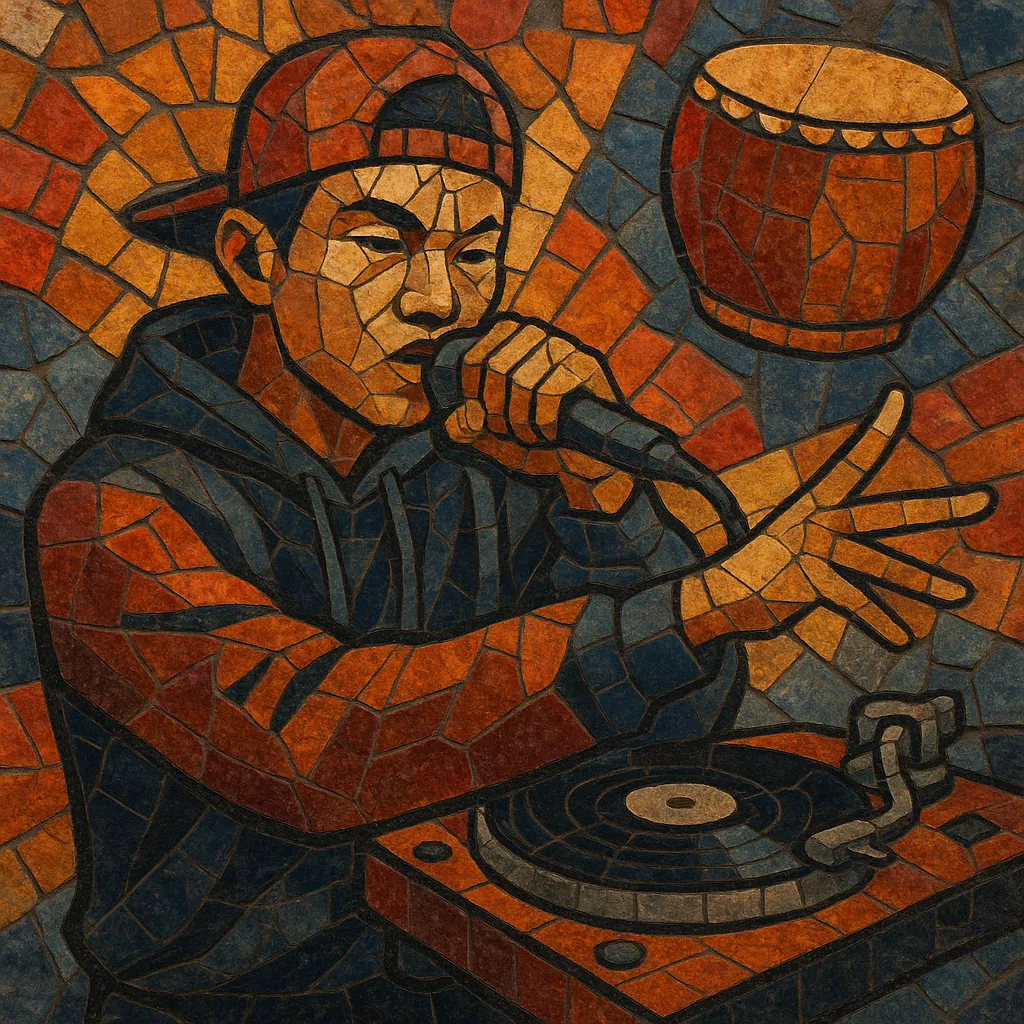Chinese hip hop is the family of hip hop scenes across Mainland China, Taiwan, Hong Kong, and the Chinese diaspora that adapts rap, DJing, and beatmaking to Sinitic languages and regional cultures.
It blends core hip hop elements—MCing, sampling, breakbeats, and later trap production—with Mandarin, Cantonese, and regional dialect flows, often incorporating melodic hooks borrowed from Mandopop/C‑pop and occasional samples or timbral references to traditional Chinese instruments.
Lyric themes range from street realism and self‑expression to wordplay, social commentary, and internet‑age humor, while industry realities (broadcast standards and platform guidelines) encourage creative metaphor, double entendre, and coded storytelling.
Hip hop arrived in Greater China via imported records, MTV, films, and b‑boy culture. In Taiwan, early adopters like L.A. Boyz introduced rap verses to the mainstream, and by the late 1990s MC HotDog was establishing a distinctly Mandarin flow over boom‑bap beats. In Hong Kong, crews such as LMF brought Cantonese rap with a rock/alternative edge. Mainland China’s earliest underground circles formed in Beijing and Shanghai, culminating in pioneering crews like Yin Ts'ang in the early 2000s.
Across the 2000s, campus scenes, online forums, and mixtapes nurtured an underground in Beijing, Shanghai, and later Chengdu/Chongqing. Producers fused boom‑bap with local samples (erhu, guzheng, opera snippets) and experimented with code‑switching among Mandarin, Cantonese, and regional dialects (e.g., Sichuanese). Taiwan’s scene matured around thoughtful lyricism (Soft Lipa) and club‑ready rap, while Hong Kong’s Cantonese rap carved out a socially aware voice.
Trap’s global rise reshaped production aesthetics: 808s, triplet flows, and double‑time hi‑hats spread rapidly. Variety competitions (notably a 2017 breakout TV rap show) exposed millions to Chinese‑language rap, elevating artists such as GAI, VAVA, and Tizzy T. Chengdu’s wave (e.g., Higher Brothers) connected internationally through streaming platforms and collaborations, while online ecosystems (NetEase, QQ Music, Bilibili) enabled fast circulation of singles and cyphers.
The scene fragmented into niches—trap, melodic pop‑rap, conscious/boom‑bap revival, drill‑tinged beats—while retaining a shared emphasis on linguistic play and regional identity. Diaspora links (with North America and Southeast Asia) fostered cross‑border collabs, and producers refined hybrid palettes: modern 808 design with pentatonic riffs, traditional percussion, and R&B hooks. Artists learned to balance candor and metaphor, pushing storytelling and sound design within local platform standards.
Chinese hip hop normalized rapping within Mandopop/C‑pop, expanded viable flows for tonal languages, and built city‑based rap identities (Beijing, Shanghai, Chengdu, Chongqing, Taipei, Hong Kong). Its influence now runs both underground and mainstream, from independent cyphers to charting pop‑rap hits.


